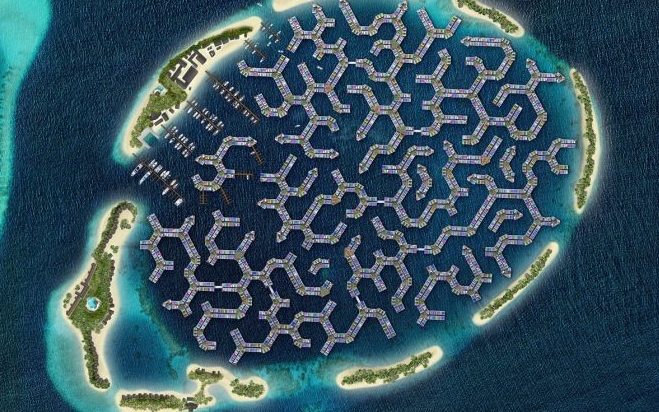Construction of a floating city continues in a turquoise lagoon in the Maldives. This futuristic architectural structure, an agglomeration of homes, restaurants, shops, a school and a hospital, opened its first facilities in the summer and will allow 20,000 people to live in a new type of city by the time it is completed in 2027.
Modeled after and emulating the geometry of the “brain coral” found in the Indian Ocean, the green city is being built to address the small island nation’s housing problem and provide local residents with a comfortable future as sea levels rise.
The project has been ten years in the making and is a joint venture between the Government of the Maldives and Dutch architecture studio Waterstudio.
The government’s goal is to transform them from future climate refugees into climate innovators.
The Maldives, an archipelago of 1,190 small islands, is one of the countries most vulnerable to climate change. Eighty percent of the area of this state is located at an altitude of less than one meter above sea level. According to some estimates, they will be flooded by 2100.
The floating city gives new hope to the half a million people who live there. The complex is located near Male, the capital of the Maldives, which is one of the most densely populated cities in the world, with more than 200,000 people living in an area of just eight square kilometers. The new floating city will provide local residents with large, spacious and affordable homes.
The Maldives is only seven kilometers long and is located 500 kilometers from India. If you want to build 5,000 houses, where will you get your labor and materials? How can we ensure that there are no emissions in pristine waters?
The modular units were built at a nearby shipyard and towed into the 200-hectare lagoon, where they are anchored to the seabed and linked together into a series of hexagonal-shaped floating structures.





